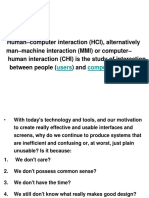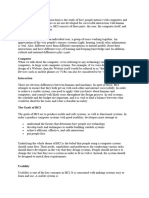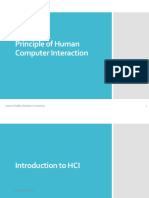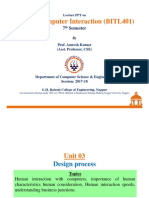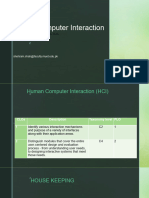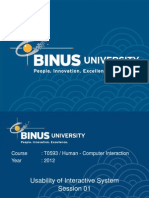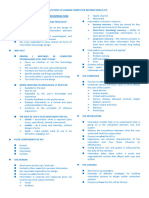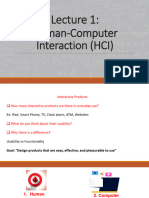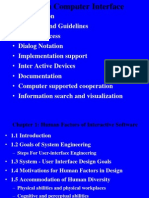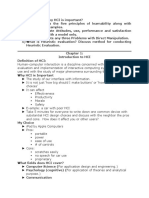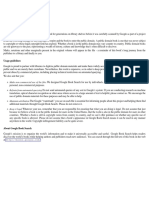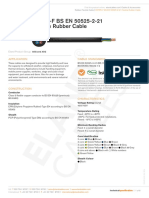0% found this document useful (0 votes)
92 views40 pagesHuman Computer Interface Design: Lecturer: Mutama, S Msc. IT With Security Email: Office #: 615 Block A
This document provides information about the Human Computer Interface Design course ITU O7409 at Ifm University. The course is assessed through a final written exam worth 60% and continuous assessments worth 40%. Continuous assessments include a written test worth 18% and group project assignments worth 22%. The document discusses key topics in human computer interface design including the goal to enhance usability between humans and computers. It covers the disciplines that contribute to HCI design such as computer science, cognitive psychology, and ergonomics. Examples of good and bad interface design are provided. The nature of the user and how it impacts design is a major focus, covering topics like computer skills, age, disabilities, and culture.
Uploaded by
Claus MouriceCopyright
© © All Rights Reserved
We take content rights seriously. If you suspect this is your content, claim it here.
Available Formats
Download as PPT, PDF, TXT or read online on Scribd
0% found this document useful (0 votes)
92 views40 pagesHuman Computer Interface Design: Lecturer: Mutama, S Msc. IT With Security Email: Office #: 615 Block A
This document provides information about the Human Computer Interface Design course ITU O7409 at Ifm University. The course is assessed through a final written exam worth 60% and continuous assessments worth 40%. Continuous assessments include a written test worth 18% and group project assignments worth 22%. The document discusses key topics in human computer interface design including the goal to enhance usability between humans and computers. It covers the disciplines that contribute to HCI design such as computer science, cognitive psychology, and ergonomics. Examples of good and bad interface design are provided. The nature of the user and how it impacts design is a major focus, covering topics like computer skills, age, disabilities, and culture.
Uploaded by
Claus MouriceCopyright
© © All Rights Reserved
We take content rights seriously. If you suspect this is your content, claim it here.
Available Formats
Download as PPT, PDF, TXT or read online on Scribd
/ 40
















